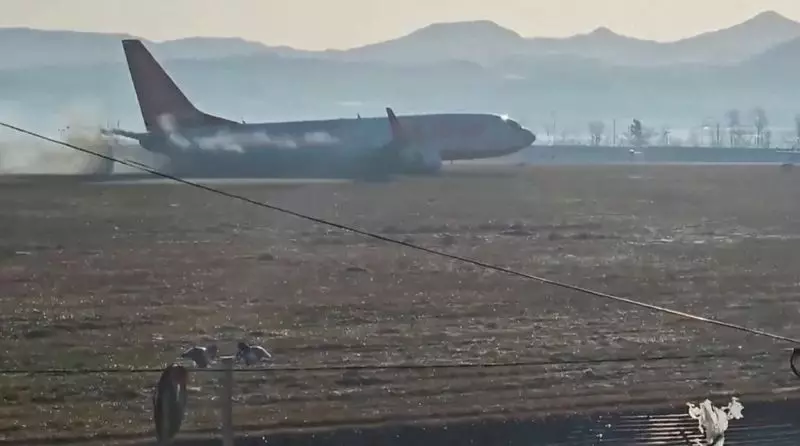The recent catastrophic incident involving Jeju Air Flight 7C2216 has left many grappling with the stark realities of aviation safety and risk management. The crash, which resulted in the loss of 179 lives out of 181 people onboard, raises critical questions regarding both the circumstances leading up to the incident and the overarching implications for the global aviation industry.
As investigators delve into the details surrounding the crash at Muan International Airport, they face a myriad of uncertainties that complicate the inquiry. The absence of the landing gear during the aircraft’s belly landing illustrates the peculiar nature of this incident, which experts agree is a rare occurrence. Aviation specialist Gregory Alegi has indicated that several questions abound, and the demand for clarity is mounting. Why was the aircraft traveling at a heightened speed? What led to the landing gear not being deployed, and why were the flaps left inoperative? Such operational anomalies demand more than cursory explanations as they play a crucial role in understanding the disaster’s root causes.
The potential influence of a bird strike, as suggested by preliminary reports, adds yet another layer to the investigation. While bird strikes are a common risk in aviation, saying that they directly led to the crash is contentious. Christian Beckert, a flight safety expert, argued that while a bird strike could impact the engine in a dramatic scenario, it typically does not singularly account for such grave outcomes. It raises a significant point: the complexity of aviation accidents often involves a “cocktail of factors.” Thus, expecting to find one conclusive reason is a simplistic approach to a multifaceted problem.
In compliance with international aviation standards, South Korea has assumed responsibility for leading the investigation, with vital input from the United States’ National Transportation Safety Board due to the origin of the aircraft. Investigators will access flight data and cockpit voice recorders to build a timeline of events prior to the crash. The recovery and analysis of these records are pivotal, especially considering that they offer insights into pilot decisions, engine performance, and flight operations immediately preceding the disaster.
Such data not only help create a clearer picture but also serve as crucial learning tools for the aviation industry to strengthen safety protocols. However, experts warn that piecing together the sequence of events can take months, often leading to more questions than answers in the interim.
The timeline leading to the accident details a series of alarming events that occurred in quick succession. Following the control tower’s bird strike warning, the pilots declared an emergency and attempted an unplanned belly landing. Understanding the sequence here is vital; the rapidity of events, from the bird strike warning to the mayday call, raises concerns about the pressures faced by crew members during crisis situations.
Remarkably, aviation analysts stress that while bird strikes are a frequent occurrence—occurring far more often than significant accidents—they rarely lead to total loss of aircraft. This underscores the need for robust emergency protocols. Trevor Jensen, an Australian consultant, suggested that emergency services are typically prepared for belly landings; however, the nature of this incident suggests a departure from normal protocol and preparedness.
The implications of the Jeju Air disaster extend far beyond South Korea. The incident prominently highlights the necessity for airlines to reassess their safety measures and urban strategies for preventing similar occurrences. The Boeing 737-800 is among the most utilized aircraft in commercial aviation, and this tragic event could lead to wider scrutiny of operational standards within commercial fleets worldwide.
The tragedy stirs a crucial conversation about pilot training, aircraft technology, and the aviation community’s collective responsibility in safeguarding the lives of passengers and crew members. Acknowledgment of what went wrong and a commitment to addressing lapses in procedure—whether they involve mechanical failings or human judgment errors—could prove instrumental in constructing a more resilient aviation safety culture.
The investigation into the Jeju Air Flight 7C2216 crash serves as a sobering reminder of the inherent dangers associated with air travel. As experts and authorities work together to untangle the layers of this aviation mystery, the most important takeaway remains clear: the aviation industry must prioritize continuous improvement to prevent such tragedies in the future.

